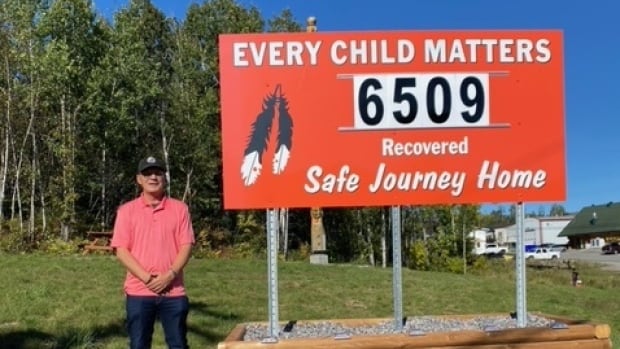
Why it's difficult to put a number on how many children died at residential schools
CBC
WARNING: This story contains distressing details.
A large orange billboard with the slogan "Every Child Matters" stands in the middle of Kebaowek First Nation, an Algonquin community in Quebec's Abitibi-Témiscamingue region, 300 kilometres northwest of Ottawa.
It also has a tally of potential unmarked graves that have been discovered so far as First Nations across the country conduct ground-penetrating radar searches at former residential school sites. Leadership hopes the growing number serves as a stark reminder of how many children never returned home.
"It's taken us so long to get the attention of Canada to the atrocities that happened to our people," said Kebaowek Chief Lance Haymond.
"We just want to support those First Nations who are going through the process of discovery. It's just our way of showing support and continuing to educate and highlight what's gone on in residential schools."
The sign is just one of many acts of solidarity, awareness, and remembrance that have popped up across the country ahead of the National Day for Truth and Reconciliation on Sept. 30. But while many are eager to raise awareness and make similar shows of support, navigating the different numbers circulating is a challenge.
The number that Kebaowek is using — 6,509 — is one that has been circulating widely on social media, among others.





















 Run 3 Space | Play Space Running Game
Run 3 Space | Play Space Running Game Traffic Jam 3D | Online Racing Game
Traffic Jam 3D | Online Racing Game Duck Hunt | Play Old Classic Game
Duck Hunt | Play Old Classic Game